One of my favorite mottos as a mom is “you do the best you can with the information you have available.” Being a mom means you are constantly faced with so many decisions about what is best for your baby, and let’s face it: motherhood definitely doesn’t come with an owner’s manual. My goal is to help give you the best information I can to help you make the best decisions for your baby’s motor development! With that being said, I would like to give you some information on baby products that I think are best to AVOID and some that I recommend using in small MODERATION!
First, I want to start off by saying this is a JUDGEMENT-FREE ZONE! If you have been using one or all of these things, that is OKAY! Now that you have more information about the impact of these things on development, you can make a more informed decision for your family! And don’t worry, I’ll also give you some suggestions for things I DO recommend!
Rock N’ Play
This piece of equipment has always been at the top of my “do not recommend” list! The incline of this device and the softness of the material put too much pressure on the back of your baby’s head and limit her ability to change her head position. When your baby is in this device for an extended period of time without the ability to move her head, she is at increased risk for flatness on the back of her head. You also put baby at risk for torticollis (tight neck muscles that limit baby’s movement and motor skills). This device is NOT SAFE for infant sleep – no matter what age! The incline of the device puts your baby at risk for positional asphyxiation, which can be life-threatening.
As of April 12, 2019 all models of the Rock n’ Play have been officially RECALLED. Based on this and the negative impact this device can have on your baby’s development, I do not recommend letting your baby spend any amount of time in these, especially for sleeping. If you have bought one of these in the last 6 months, you can follow this link to get a voucher for a new piece of baby equipment. Even if you are not eligible to return yours, I still recommend getting rid of this device if you own one. The risks of this device definitely outweigh any benefits. Don’t let survivor bias of “I used it with my first and he/she is fine” trick you into ignoring the warnings against these devices. Here are some good alternatives for a small, portable device to use instead:

Baby Walkers
To clarify: in this post, I am referring to baby walkers that your baby sits in (see photo below), not the kind that she pushes and walks behind! I thought these devices were going “out of style,” but it seems that they are making an unfortunate comeback. First, I want to completely dispel the myth that these devices will help your baby learn to walk! Despite the fact that “walk” is in the title, these do not, in any way, help teach your baby to walk. These devices cause your baby to turn off the core muscles and shuffle the feet to move the walker forward. They also often promote your baby to be up on her toes or crouch with bent knees and to lean backwards – none of which promote appropriate walking. If used before your baby can sit or crawl independently, these devices can significantly delay those milestones, in addition to delaying walking. Being in an extended (straight up) position like standing in a walker is easier (and more fun) for your baby, so she will always prefer to be standing in the walker rather than sitting and crawling. Both sitting and crawling are essential skills and you don’t want to risk delaying those skills by using an infant walker. If your baby has low muscle tone or is at risk for hip dislocation, this device can put your baby’s hip joints in a compromised position. This device also blocks your baby’s view of her feet AND the floor/environment around her. Being able to see the feet and navigate the environment and obstacles around her are both essential for learning to walk.
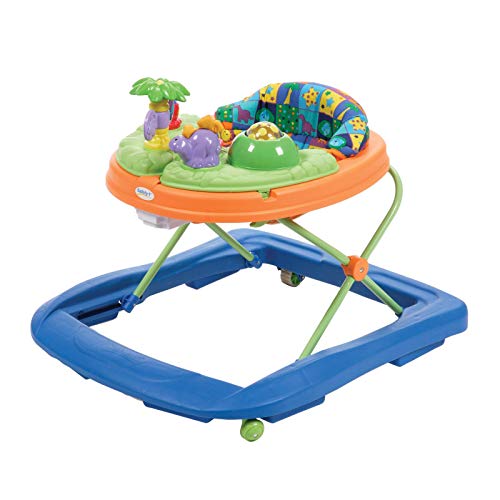
The American Academy of Pediatrics has raised many concerns with these devices and their safety over the years. There have been many instances of babies falling down stairs and pulling heavy furniture down on top of them in these. I would opt for free playtime in the floor over this device 10/10 times! If you need a safe, contained space for your baby to play, I would choose a play yard (like this) instead! If you want a device to actually help promote walking skills, consider this Vtech Sit-to-Stand Learning Walker.
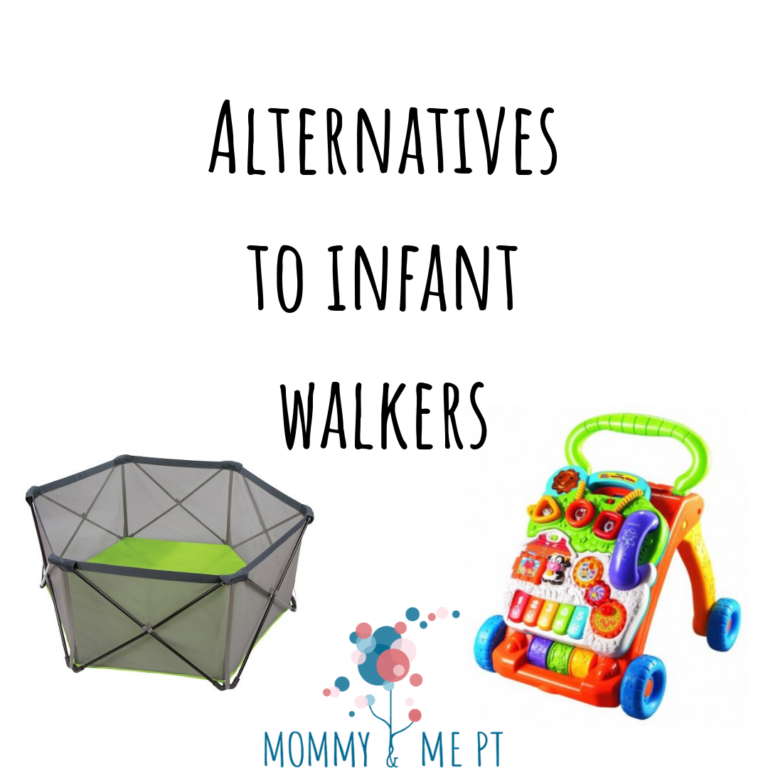
Jumpers/Exersaucers
This is going to sound a little like a broken record because many of the reasons I don’t recommend these devices are the same as why I don’t recommend the infant walkers. Do you notice in the picture below that the baby in the exersaucer is up on her toes? A very common problem with exersaucers/jumpers is that the height is never appropriate, so your baby is either up on her toes or in a crouched position. Neither is a great position for promoting motor skills. Prolonged standing before your baby can sit or crawl independently can actually delay those skills because these devices activate the opposite muscles needed for sitting and crawling. If your baby is already at risk for delayed motor skills, {premature birth, low muscle tone, torticollis, any other neuro/muscular conditions, etc} exersaucers/jumpers can further delay motor skills. Contrary to what you might think, these devices actually turn OFF your baby’s core, so even though it looks like your baby is practicing skills, she really isn’t. If your baby has low muscle tone or any hip problems, these containers can be dangerous for your baby’s joints because of the unnatural positioning of the seat. I suggest investing in a great play yard so that your baby can enjoy some free movement to practice important motor skills. Something that worked really well for my daughter when I needed to get a few things done was to give her some safe household items: the remote, kitchen utensils, a wipe container, etc. The novelty was always key for keeping her entertained for a few minutes!
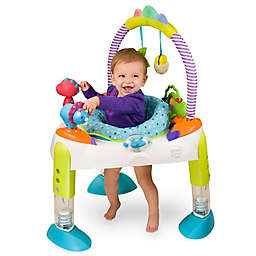
DockATot/Sleeping Positioners
You might be wondering what these devices have to do with gross motor skills since they are most often used for sleep. Well, it may surprise you to learn that a crib is a FANTASTIC place for your baby to practice her gross motor skills! In fact, my daughter did so many of her skills for the first time IN her crib (rolling, getting into sitting, pulling up). The reason for this is that your baby is in a dark room with no stimulation, so she has free reign to move around in her crib and experiment with moving her body in new ways.
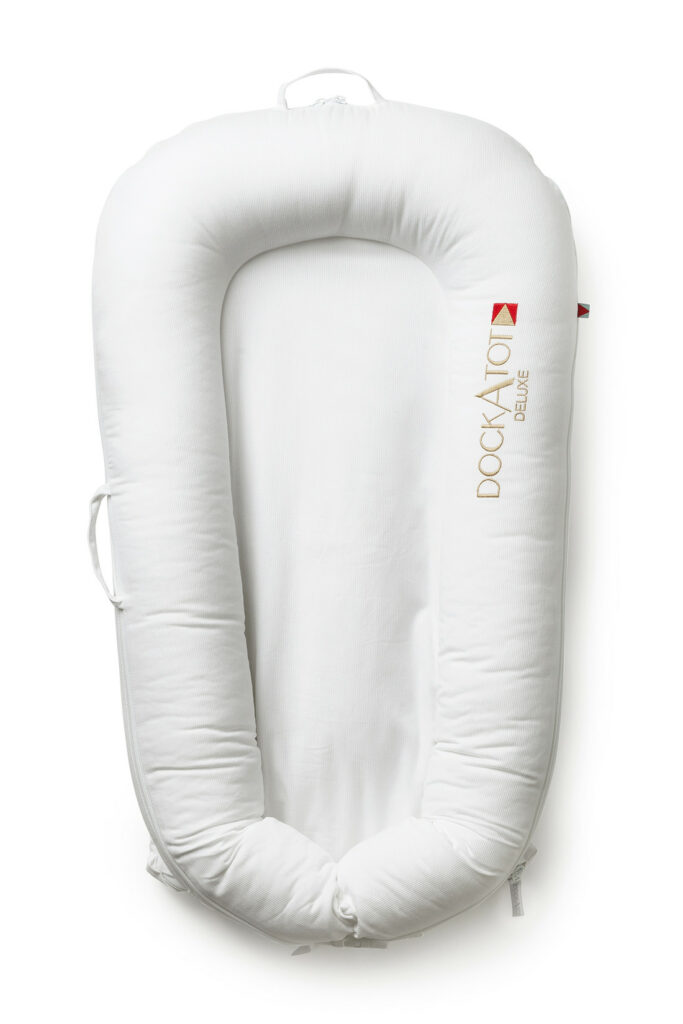
So, what’s the issue with Dock-a-Tots and sleep positioners? Well, first it is important to note that the American Academy of Pediatrics (AAP) recommends that babies sleep on a firm, flat surface with NOTHING added (no blankets, toys or wedges/positioners of any kind) to comply with SAFE SLEEP recommendations and reduce the risk of SIDS.
If that alone isn’t enough to convince you to not use these, let’s consider the impact of these positioners on gross motor skills. As I mentioned, the crib is a perfect place for your baby to move around, explore and experiment. The purpose of sleep positioners is to “contain” your baby in one position during sleep to mimic the tight, contained space in the womb. So, the entire purpose of the positioners goes against the premise of letting your baby roam free in the crib. My recommendation is to comply with safe sleep recommendations and let your baby freely explore the crib! If you need something to help your baby feel more snuggly and comfy during sleep, I suggest a good swaddle: https://amzn.to/2HxwT49 or https://amzn.to/2wksRpb (Please NOTE: The AAP recommends dropping the swaddle by 8 weeks or when baby can roll – whichever comes first)
Everything In Moderation
Now that you know the products that I recommend avoiding, let’s touch on products that I recommend using in moderation:
Car Seats
Obviously, car seats must always be used when your baby is in a moving vehicle! But, that is the only time I recommend using them. I know it is very common practice to leave baby in the car seat if she is sleeping or to even PUT baby in the car seat to help her fall asleep. Not only is this not recommended for safety reasons, but unnecessary time in the car seat can also lead to flat head syndrome and delayed motor skills. In fact, if you plan to take your baby on a long car ride, I recommend stopping every 2-3 hours and taking your baby out of the car seat for at least 15 minutes.
Bouncy seats, Swings, Etc
Bouncy seats, swings, and other baby “containers” are similar offenders to the above-mentioned items in that they put pressure on your baby’s head and put the hips in a bent position that doesn’t allow a ton of free movement. Because of these reasons, I recommend limiting time in these devices to no more than 15 minutes at a time and no more than 1 hour a day!

So, if I recommend not using any of these items, what do I recommend? My first choice is always free play in the floor or in a contained space like a play yard. You could set up different “stations” with different toys/activities to prevent your baby from getting fussy and bored.
I hope this post has given you some good information to consider as you are choosing how your baby will spend her time throughout the day!
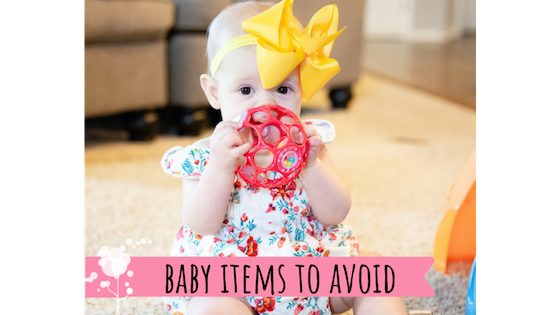
Be the first to comment